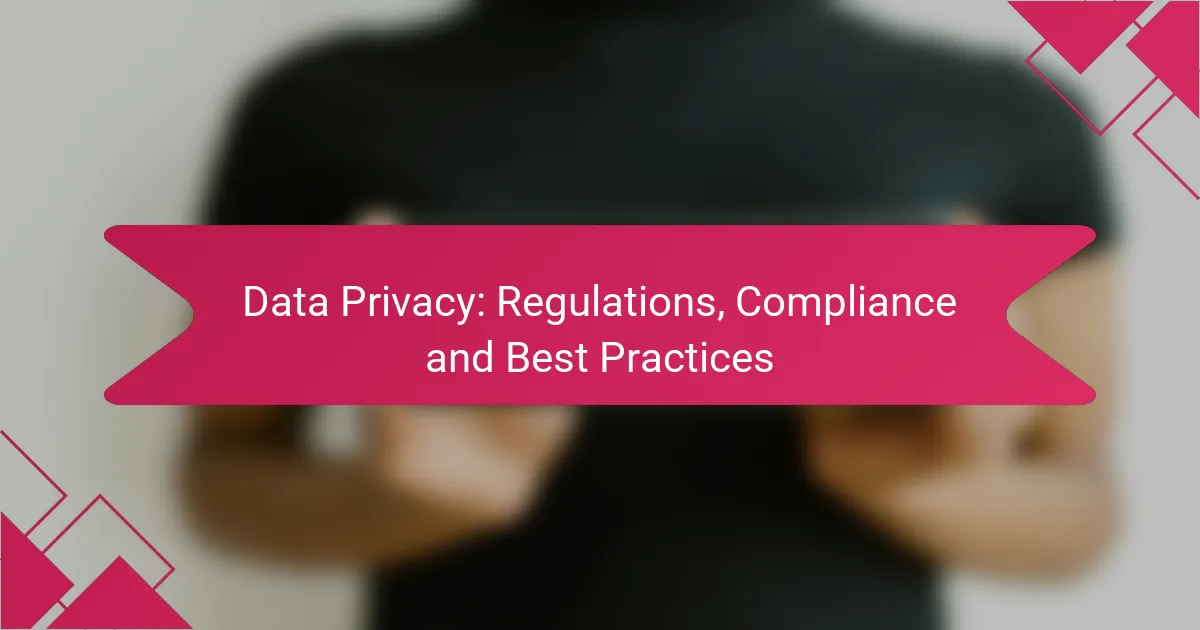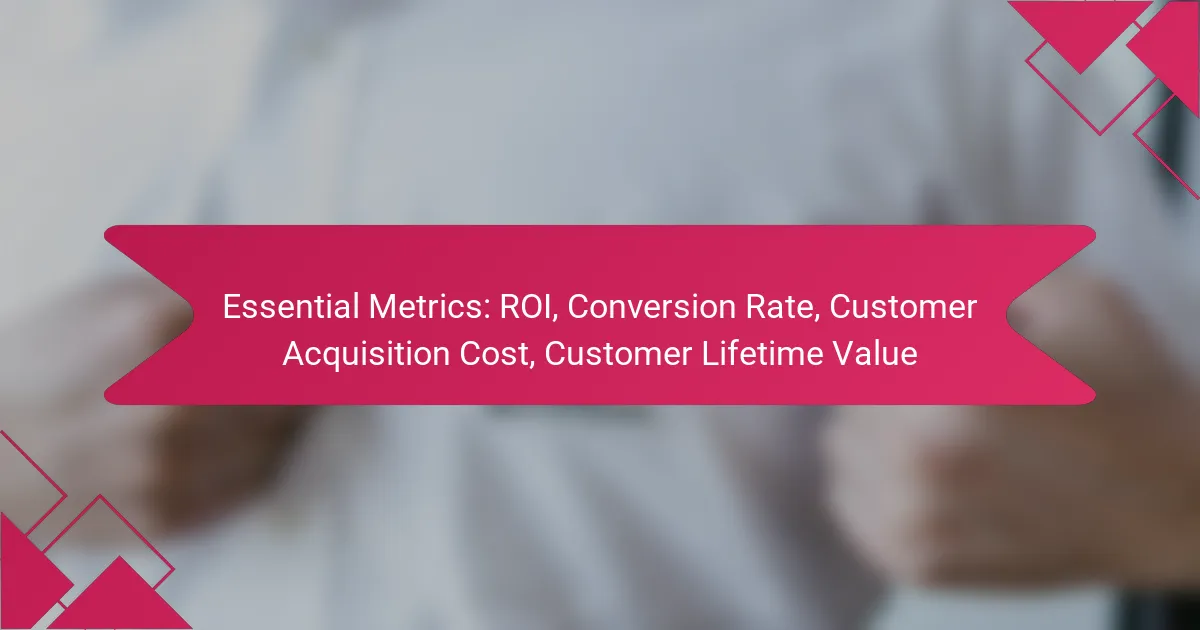Data privacy is a critical concern for organizations worldwide, governed by various regulations that aim to protect individuals’ personal information. In Canada, laws such as PIPEDA and the Digital Privacy Act set the framework for how organizations must handle data, emphasizing compliance and best practices. By understanding these regulations and implementing effective measures, organizations can safeguard personal data while fostering trust with their customers.
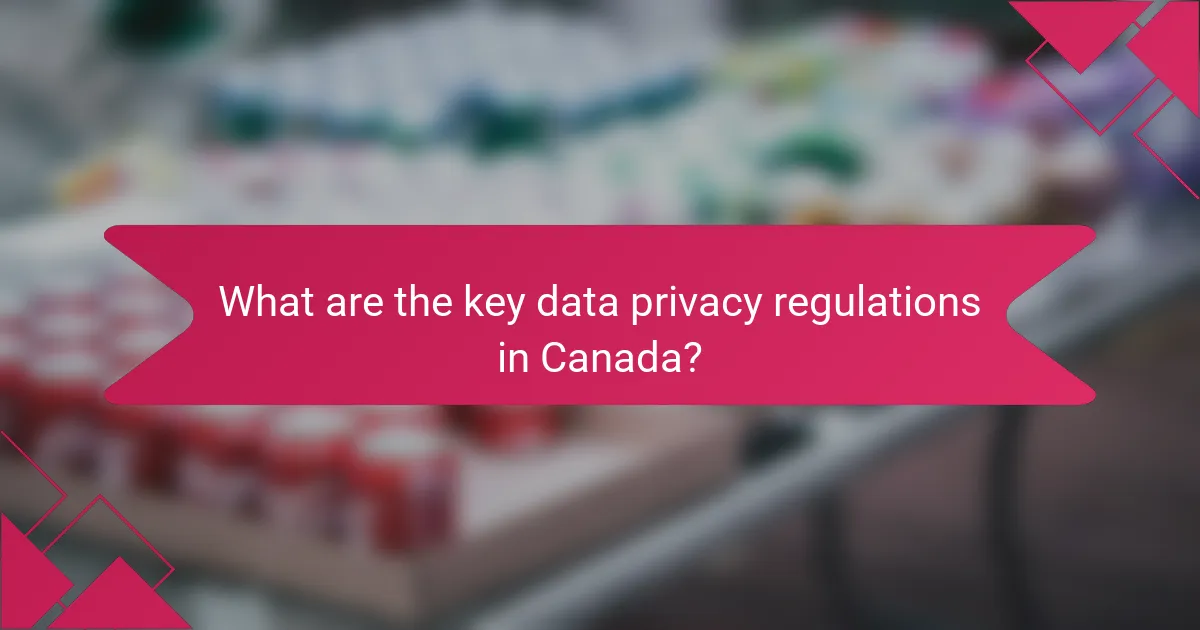
What are the key data privacy regulations in Canada?
In Canada, key data privacy regulations include the Personal Information Protection and Electronic Documents Act (PIPEDA) and the Digital Privacy Act. These laws govern how organizations collect, use, and disclose personal information, ensuring individuals’ privacy rights are protected.
Personal Information Protection and Electronic Documents Act (PIPEDA)
PIPEDA is the primary federal law that regulates the handling of personal information in the private sector. It applies to organizations across Canada that collect, use, or disclose personal data in the course of commercial activities.
Under PIPEDA, individuals have the right to access their personal information held by organizations and request corrections. Organizations must obtain consent for data collection and inform individuals about how their data will be used.
Digital Privacy Act
The Digital Privacy Act amends PIPEDA and introduces additional protections for personal information. It emphasizes the importance of data breach notification, requiring organizations to inform affected individuals and the Privacy Commissioner of Canada when a breach poses a significant risk of harm.
This act also enhances the enforcement powers of the Privacy Commissioner, allowing for stronger oversight and compliance measures. Organizations must ensure they have robust data protection practices to comply with these updated requirements.
General Data Protection Regulation (GDPR) implications
While GDPR is a European regulation, it has implications for Canadian organizations that handle the personal data of EU citizens. Companies must ensure compliance with both PIPEDA and GDPR if they are processing data from individuals in the EU.
Key considerations include obtaining explicit consent, ensuring data portability, and implementing stringent data protection measures. Organizations may need to appoint a representative in the EU to facilitate compliance and communication with regulatory authorities.
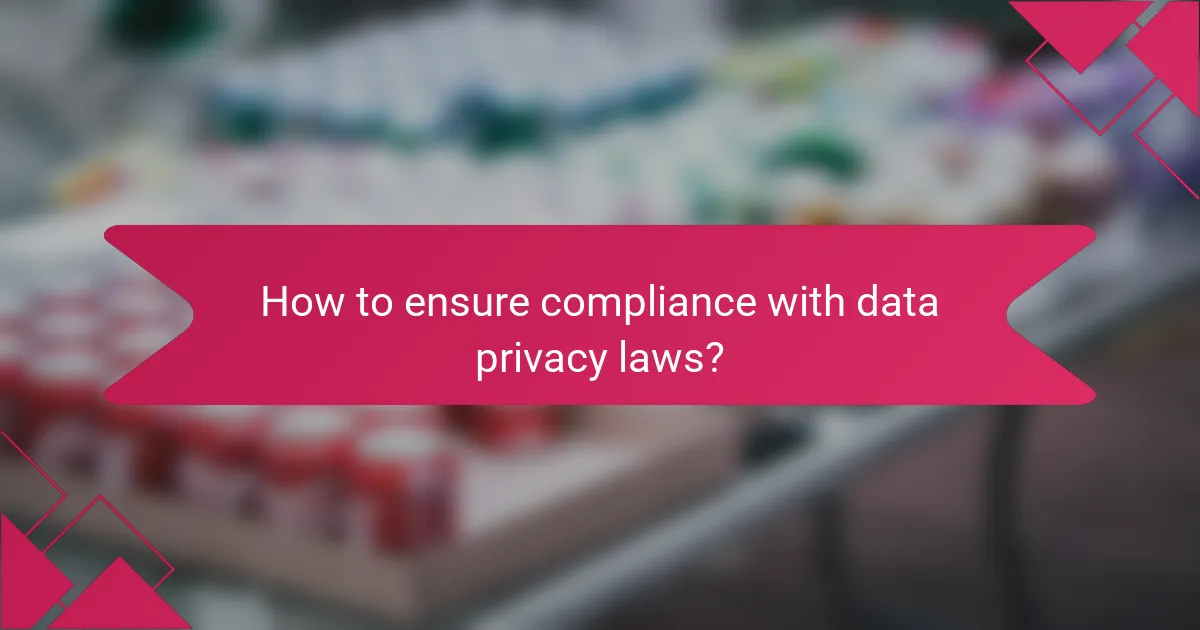
How to ensure compliance with data privacy laws?
Ensuring compliance with data privacy laws involves understanding the specific regulations applicable to your organization and implementing necessary measures to meet those requirements. Key steps include conducting audits, establishing policies, and training staff to protect personal data effectively.
Conduct regular data audits
Regular data audits are essential for identifying how personal data is collected, stored, and used within your organization. These audits help ensure that data handling practices align with legal requirements and internal policies.
During an audit, assess data inventory, access controls, and retention practices. Aim to conduct these audits at least annually, or more frequently if your data processing activities change significantly.
Implement data protection policies
Data protection policies outline how your organization manages personal data and ensures compliance with relevant laws. These policies should cover data collection, usage, sharing, and retention practices.
When developing policies, consider including guidelines for data encryption, access controls, and incident response plans. Regularly review and update these policies to reflect changes in regulations or business practices.
Train employees on data privacy
Training employees on data privacy is crucial for fostering a culture of compliance within your organization. Ensure that all staff members understand their responsibilities regarding data protection and the implications of non-compliance.
Consider implementing regular training sessions and providing resources such as handbooks or online courses. Tailor the training to different roles within the organization to address specific data handling practices relevant to each position.
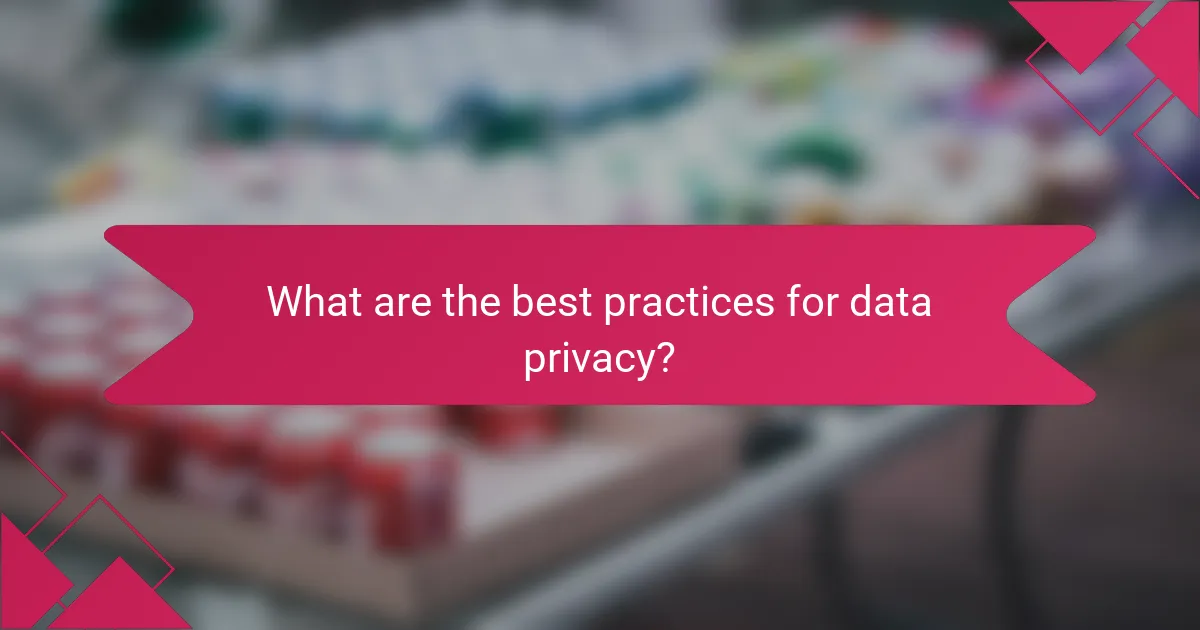
What are the best practices for data privacy?
The best practices for data privacy focus on minimizing data collection, ensuring data security, and maintaining transparency with users. Implementing these strategies helps organizations comply with regulations and build trust with customers.
Data minimization strategies
Data minimization involves collecting only the information necessary for a specific purpose. Organizations should assess their data needs regularly and eliminate any unnecessary data collection to reduce risk.
For example, if a business only requires an email address for a newsletter, it should not ask for additional personal information like phone numbers or addresses. This approach not only protects user privacy but also simplifies data management.
Encryption of sensitive data
Encrypting sensitive data is crucial for protecting information from unauthorized access. This process transforms readable data into a coded format, making it unreadable without the correct decryption key.
Organizations should implement encryption for data at rest and in transit. For instance, using protocols like TLS for data in transit and AES for stored data can significantly enhance security. Regularly updating encryption methods is also essential to counter evolving threats.
Regular updates to privacy policies
Regularly updating privacy policies ensures that users are informed about how their data is being used and protected. These updates should reflect any changes in data practices, legal requirements, or technology.
Organizations should review their privacy policies at least annually or whenever significant changes occur. Clear communication of these updates to users fosters transparency and trust, which are vital for maintaining customer relationships.
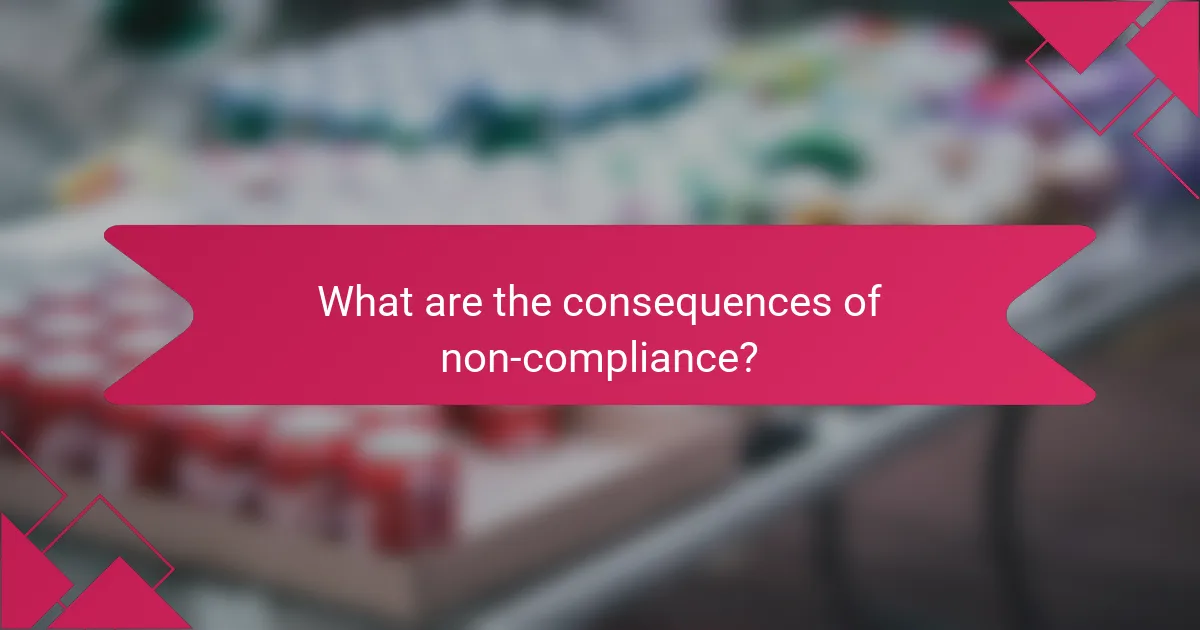
What are the consequences of non-compliance?
Non-compliance with data privacy regulations can lead to severe consequences for organizations, including financial penalties, damage to reputation, and potential legal actions. Understanding these risks is crucial for maintaining compliance and safeguarding both the organization and its stakeholders.
Fines and penalties
Fines for non-compliance can vary significantly based on the regulation and the severity of the violation. For instance, under the General Data Protection Regulation (GDPR), fines can reach up to 4% of annual global revenue or €20 million, whichever is higher. Organizations should be aware of the specific thresholds and penalties applicable in their jurisdiction.
In the United States, penalties under laws like the Health Insurance Portability and Accountability Act (HIPAA) can range from thousands to millions of dollars, depending on the nature of the breach. Regular audits and compliance checks can help mitigate these financial risks.
Reputational damage
Non-compliance can severely harm an organization’s reputation, leading to a loss of customer trust and loyalty. Consumers are increasingly aware of data privacy issues and may choose to take their business elsewhere if they perceive a company as negligent in protecting their information.
Reputational damage can also extend to partnerships and collaborations, as other businesses may hesitate to work with a non-compliant organization. Proactive communication and transparency about data practices can help rebuild trust after a compliance failure.
Legal repercussions
Legal repercussions for non-compliance can include lawsuits from affected individuals or regulatory bodies. Organizations may face class-action lawsuits if a data breach compromises personal information, leading to significant legal costs and settlements.
In addition to civil suits, non-compliance can result in criminal charges in severe cases, particularly if negligence is proven. It is essential for organizations to implement robust data protection policies and training to minimize legal risks associated with non-compliance.

How to choose a data privacy management tool?
Choosing a data privacy management tool involves assessing your organization’s specific needs, compliance requirements, and the features offered by various solutions. Focus on tools that enhance your data protection strategies while ensuring compliance with relevant regulations.
Evaluate features and capabilities
When evaluating features, prioritize tools that offer comprehensive data mapping, risk assessment, and incident response capabilities. Look for functionalities that support compliance with regulations like GDPR or CCPA, as these are critical for effective data privacy management.
Consider additional features such as automated reporting, user access controls, and data encryption. A tool that provides customizable dashboards can also help you monitor compliance status and data usage effectively.
Consider integration with existing systems
Ensure that the data privacy management tool can seamlessly integrate with your current IT infrastructure, including CRM, ERP, and other data management systems. Compatibility reduces implementation time and helps maintain data integrity across platforms.
Check if the tool supports APIs or has pre-built connectors for popular software. This can facilitate smoother data flows and enhance overall efficiency in managing privacy-related tasks.
Assess vendor reputation and support
Research the vendor’s reputation in the market by reading customer reviews and case studies. A well-regarded vendor is more likely to provide reliable updates and support, which is crucial for maintaining compliance over time.
Evaluate the level of customer support offered, including availability of training resources, documentation, and responsive helpdesk services. A vendor that prioritizes customer success can significantly ease the adoption process and ongoing management of the tool.
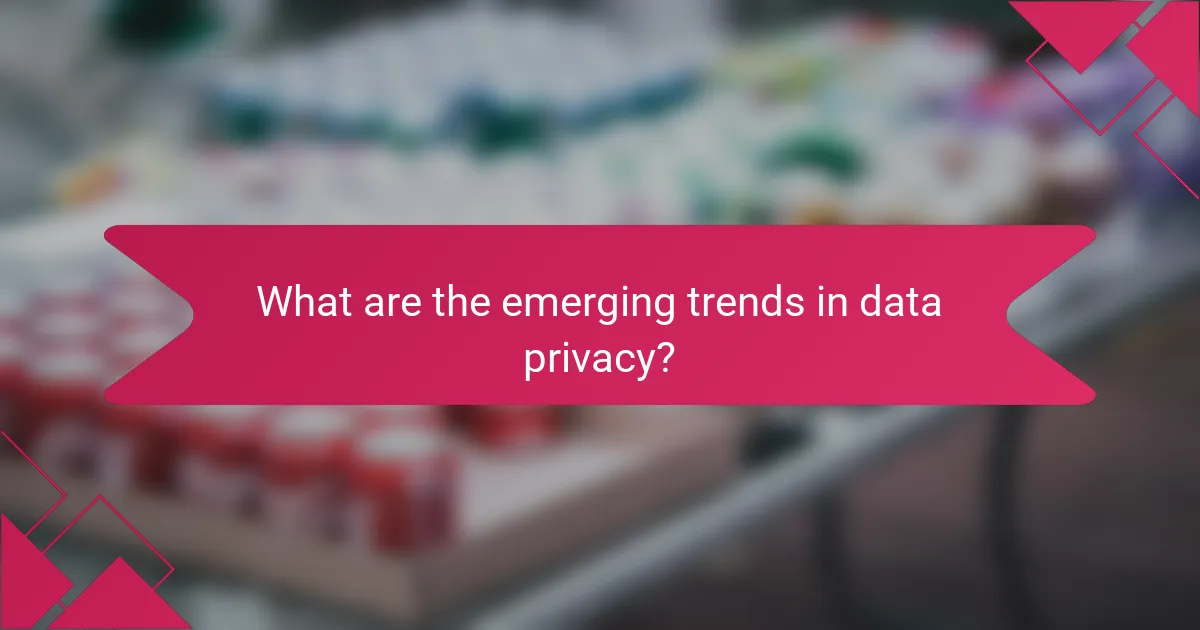
What are the emerging trends in data privacy?
Emerging trends in data privacy reflect a growing emphasis on protecting consumer information and adapting to technological advancements. Key developments include enhanced consumer rights, the integration of privacy by design principles, and the increasing role of artificial intelligence in managing data.
Increased focus on consumer rights
There is a notable shift towards prioritizing consumer rights in data privacy regulations. Many jurisdictions are implementing laws that empower individuals to have greater control over their personal information, including the right to access, correct, and delete their data.
For example, the General Data Protection Regulation (GDPR) in the European Union grants individuals extensive rights regarding their data. Companies must ensure transparency and provide clear options for consumers to manage their data preferences effectively.
Adoption of privacy by design
Privacy by design is becoming a fundamental principle in data management, emphasizing the integration of privacy measures during the development of products and services. This proactive approach ensures that privacy is considered at every stage, from conception to deployment.
Organizations are encouraged to conduct privacy impact assessments and implement data minimization strategies. By embedding privacy features into their systems, businesses can enhance user trust and comply with regulatory requirements more effectively.
Rise of artificial intelligence in data management
The use of artificial intelligence (AI) in data management is transforming how organizations handle privacy concerns. AI technologies can analyze vast amounts of data to identify patterns and anomalies, helping companies detect potential privacy breaches and respond swiftly.
However, the deployment of AI also raises significant privacy challenges, such as ensuring that algorithms do not inadvertently discriminate against individuals or misuse personal data. Organizations must balance the benefits of AI with robust governance frameworks to maintain compliance and protect consumer rights.






